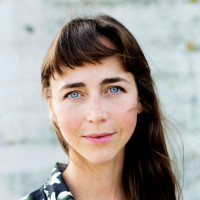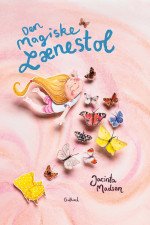Synopsis
It is spring and Little Tree is about to burst into leaf when a small girl comes jumping through the forest. She pulls Little Tree out of the soil and brings it home, so they can live together in the city. The girl is full of good ideas and does everything she can to make sure her new friend is well – but Little Tree becomes weak and starts to fade. What is wrong with Little Tree?
Little Tree is a story about budding friendship between a girl and a little tree which is afraid to grow. It is difficult to play together when you are from different worlds, but perhaps the friendship can form the foundation for a completely new understanding?
A story in pictures about a friendship out of the ordinary, about empathy and the importance of seeing what others need.
Jacinta has developed a special collage technique where nature, paint brush, scissors and paper create a special aesthetic style which encourages children and grown-ups to creativity and play.
Take a look at Danish publisher, Gutkind's, extra Read and Talk-material here.
Personal note from the author
What is your relationship to nature?
As a child, I spent a lot of time in the forest. It was my favourite place. I loved the sound of the forest: of the low-flying insects, the wood pecker and the slightly uncanny silence of the pine forest when I was lying in safe distance underneath the bright tree tops of the beech trees.
I could lie for hours on the forest floor and look at ants and small flowers and fantasise about gnomes living under the oak tree stumps or elves who were having lunch underneath the porcini mushrooms. I fantasised about some of the trees being able to talk and of course that they would prefer to talk with me. The forest is in other words a world I like to inhabit and I would love to share that universe with children and their grown-ups.
To this day, I experience how the patterns in the forest can bring peace inside me. To look at the tree tops from below, the intrincic pattern they form, it resonates with something inside me and I feel peace and I feel like I am part of something bigger. I think this is a universal experience and I also think other living organisms experience that. A cow is surely happier being in the field as opposed to inside the stable.
Now nature therapy is becoming more widespread. In Japan you can even get nature experiences prescribed, I heard on the radio the other day. “Forest bathing” they call it. This element of sensuousness I’m aiming to have in my book. That you can almost feel that you touch the bark of the tree or the leaves on the pages. The sensuousness of nature has inspired me on the artwork side of things.
What kind of message would you like to send with your book?
Nowadays, we are faced with a planet under pressure – and it is because of us humans. We need to redefine our relationship to nature. I would like to tell an uplifting story about finding a new way to co-exist, where there is space for both nature and humans and a possibility to learn from each other.
It is of course a bit wacky to think that nature should learn something from us when we have only lived here for about 1% of the lifetime of the planet, but I believe that everything living to a certain degree interacts with each other and this was also something I wanted to convey with my story. That we influence each other, that we are different, but also made from the same material.
And to reach that conclusion, we first and foremost need to see nature as a team player, a co-actor, something we need to have a relationship with, not just see it as a resource we need to manage.








